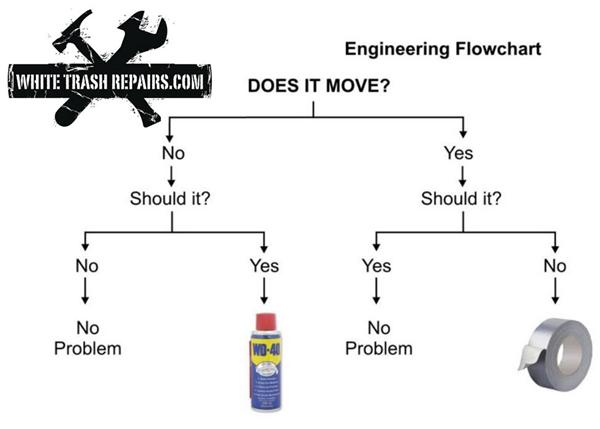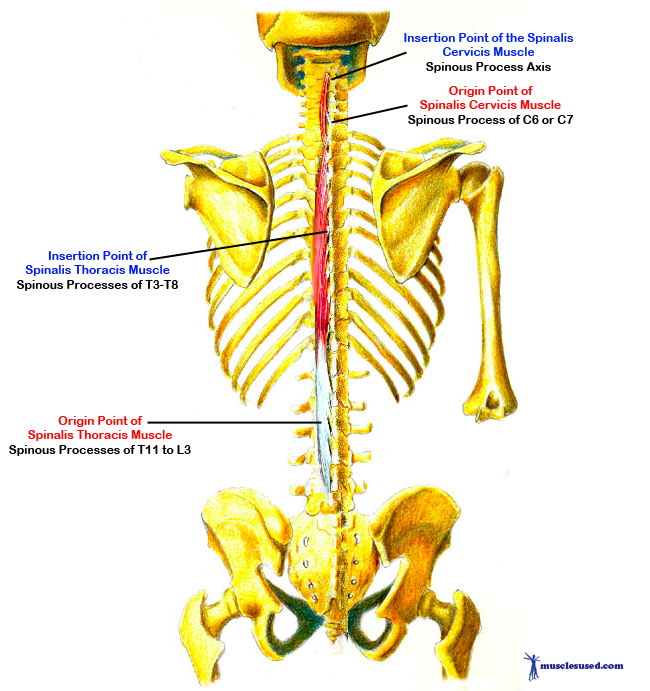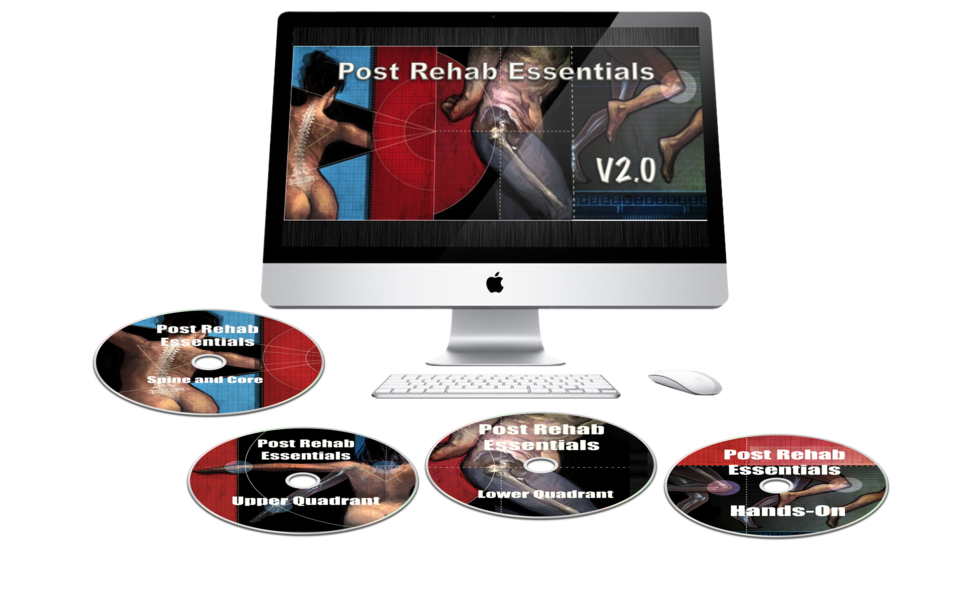What You Need to Know About Mobility and Stability
Yesterday I started the day by putting up a tweet about how most things in life could be fixed with either coffee or duct tape. It was a cheeky little thought that simply meant coffee was awesome to keep you coherent enough to get stuff done, and duct tape was similarly great for most things that would require the joining of two surfaces. While it was on my Facebook page, a friend and distance coaching client Andrew Moore shared this pic:  I’ve seen this pic before, oddly enough while also in reference to the awesomeness of duct tape, and it is still funny to see today. The really interesting thing is that after looking at it, I came to realize something kind of profound. This is essentially the schematic I use to figure out what I should do with someone in terms of how they move. All you have to do is replace WD-40 with a mobility drill specific for the area of the body being considered, and replace the duct tape with a stabilization or active isometric movement and it’s essentially the same thing. It was one of those fun “aha” moments that came at 8:22 in the morning. This started the wheels turning. Essentially, I got to thinking that what the common knowledge of mobility and stability, what it is and what it isn’t, is somewhat out of line with what we actually see in the body, from an anatomical stance and also an execution of movement. Maybe it’s just the roles we give things or the semantics of description, but I wanted to tackle it. Mike Boyle and Gray Cook came up with a legendary concept called the Joint By Joint Approach, and while this could easily double as the new title for a Cheech and Chong movie, it’s a very easy description of how the body is comprised of alternating segments of joints that require either a large amount of mobility or stability. Check out Mike’s book Advances in Functional Training or Gray Cooks book Movement for more in the Joint by Joint Approach. For example, the lumbar spine and sacrum are considered in this approach to be a segment requiring stability. This is apt because too much movement in the spine during movements can result in an increased risk for injuries or decreased performance. Does this mean the area should be immobilized? No. The truest form of spinal stability would be internal fusion, which is a surgical procedure commonly used when there’s a fracture somewhere like the pars articularis or spondylolisthesis, or in the case of extreme scoliosis. In these cases, the vertebral column has little to no ability to maintain position, and the loose vertebrae could slip and shear into the spinal chord, or scoliosis is around 70 degrees of lateral bend and compressing organs. Essentially, it’s a last resort, but not an end of the line. Here’s an awesome video of someone who has had T2-L3 fused and teaches yoga to help those who have also gone through spinal fusion surgeries. Notice how her mid back doesn’t flex or extend with the movements.
I’ve seen this pic before, oddly enough while also in reference to the awesomeness of duct tape, and it is still funny to see today. The really interesting thing is that after looking at it, I came to realize something kind of profound. This is essentially the schematic I use to figure out what I should do with someone in terms of how they move. All you have to do is replace WD-40 with a mobility drill specific for the area of the body being considered, and replace the duct tape with a stabilization or active isometric movement and it’s essentially the same thing. It was one of those fun “aha” moments that came at 8:22 in the morning. This started the wheels turning. Essentially, I got to thinking that what the common knowledge of mobility and stability, what it is and what it isn’t, is somewhat out of line with what we actually see in the body, from an anatomical stance and also an execution of movement. Maybe it’s just the roles we give things or the semantics of description, but I wanted to tackle it. Mike Boyle and Gray Cook came up with a legendary concept called the Joint By Joint Approach, and while this could easily double as the new title for a Cheech and Chong movie, it’s a very easy description of how the body is comprised of alternating segments of joints that require either a large amount of mobility or stability. Check out Mike’s book Advances in Functional Training or Gray Cooks book Movement for more in the Joint by Joint Approach. For example, the lumbar spine and sacrum are considered in this approach to be a segment requiring stability. This is apt because too much movement in the spine during movements can result in an increased risk for injuries or decreased performance. Does this mean the area should be immobilized? No. The truest form of spinal stability would be internal fusion, which is a surgical procedure commonly used when there’s a fracture somewhere like the pars articularis or spondylolisthesis, or in the case of extreme scoliosis. In these cases, the vertebral column has little to no ability to maintain position, and the loose vertebrae could slip and shear into the spinal chord, or scoliosis is around 70 degrees of lateral bend and compressing organs. Essentially, it’s a last resort, but not an end of the line. Here’s an awesome video of someone who has had T2-L3 fused and teaches yoga to help those who have also gone through spinal fusion surgeries. Notice how her mid back doesn’t flex or extend with the movements.
[embedplusvideo height=”479″ width=”600″ editlink=”http://bit.ly/1sjRts6″ standard=”http://www.youtube.com/v/SgSUg3Eepbs?fs=1″ vars=”ytid=SgSUg3Eepbs&width=600&height=479&start=&stop=&rs=w&hd=0&autoplay=0&react=1&chapters=¬es=” id=”ep9395″ /]
With all the talk of stability simply meaning “no movement,” you would assume this would be optimal for strength and spinal health, but as we can see it does affect movement quality and capacity.
The spine does have an inherrent amount of movement available at each vertebral segment. Through the lumbar spine, there’s actually between 8-14 degrees of flexion/extension per segment. The ability to rotate is highest at L5-S1, which I suspect is a major delineating fact as to why I’ve found most herniations of that disc come from excessive rotation activities versus flexion under load, which seems to happen more through L3-4 or L4-5. It’s a reason why I’ve cautioned clients away from that lying rotation stretch or against self-adjusting their vertebrae with rotational movements, especially if they’ve had previous imaging done that shows changes at L5-S1.
Simply walking requires a coordinated movement of each spinal segment through a considerable range of motion in multiple planes. People who have had a history of low back pain have shown protective adaptations to their walking by reducing their spinal range of motion, even at times when they don’t have pain.
What is meant by stability is the ability to instantaneously control the movement of a segment and prevent it from being driven into a less than desirable position. It may have to move through a range of motion to get to that instant, and then move through a range of motion following that instant, but when the segment is needed to be solid, there is no movement.
Fast forward to 3:19 to see how stiff the spine gets on impact:
[embedplusvideo height=”479″ width=”600″ editlink=”http://bit.ly/1sjVw7K” standard=”http://www.youtube.com/v/maQINqPI7S0?fs=1″ vars=”ytid=maQINqPI7S0&width=600&height=479&start=&stop=&rs=w&hd=0&autoplay=0&react=1&chapters=¬es=” id=”ep7551″ /]
Compare these kicks and the relative spinal motion at impact with someone who is less skilled and somewhat less powerful or stable:
[embedplusvideo height=”367″ width=”600″ editlink=”http://bit.ly/1sjV1uf” standard=”http://www.youtube.com/v/vv6eLRle-ug?fs=1″ vars=”ytid=vv6eLRle-ug&width=600&height=367&start=&stop=&rs=w&hd=0&autoplay=0&react=1&chapters=¬es=” id=”ep6384″ /]
See how much their spines essentially shivered on takeoff and impact? That’s going to result in a lot less power output, but it doesn’t take away any less enjoyment from watching.
There’s essentially 2 times where the spinal stiffness comes in to play in these movements, and that’s the initiation of the movement and the collision. That doesn’t mean it doesn’t move following the initial pulse and doesn’t mean it doesn’t move following the second pulse, just that the spine has to be stone when movement begins and collisions occur, or damage will be done.
Therefore, maybe stability segments could be reclassified as “instantaneous resilience” to show their need to move but the imperative need to resist movement at certain times to transfer power from one segment of the body through another.
For the mobility segments, the most obvious ones are the hips and shoulders since they’re designed as ball and socket joints with a lot of available motion through multiple planes. However, this doesn’t mean everyone should be able to train for a career in Cirque du Soliel.
That’s a level of mobility that very few people would ever need, and could actually lead to excessive motion coming from adjoining segments, but that’s for another time.
Looking at the hips, they’re a very mobile joint sure, but they also have an amazing matrix of muscles, all working with very biomechanically favourable lines and angles, lever lengths, and attachment points to do things like produce force, either in large sustained quantities or in extremely rapid quick bursts. Consider the glutes are major drivers for a movement like sprinting, which involves the hip going through a relatively small range of motion for what it’s capable of using, and also deadlifting, which uses a somewhat larger flexion range but limited extension range in comparison. The relative velocities of the two movements is night and day.
It’s the same muscle group, same attachment points, same composition, but it’s movement range of motion, velocity of movement, and duration of movement is completely different.
Usually when I talk about a movement I try to figure out what’s driving the movement. In this instance, “driving the movement” simply means which joints are doing the work to produce the movement. In an example like a deadlift, the glutes would be favourable to produce the majority of the movement. If you noticed the spine was going through a flexion/extension range of motion and the hips weren’t moving all that much, you could say that the spine was driving the movement. You could also say your corneas feel like they’re getting rakes dragged across them while watching something like this.
[embedplusvideo height=”367″ width=”600″ editlink=”http://bit.ly/1sk06CN” standard=”http://www.youtube.com/v/dy2inltIPZA?fs=1″ vars=”ytid=dy2inltIPZA&width=600&height=367&start=&stop=&rs=w&hd=0&autoplay=0&react=1&chapters=¬es=” id=”ep9782″ /]
If the spine’s driving the movement preferentially over the hips, there’s going to be trouble. – Tweet the hell out of that
The muscle fibers of the longisimis thoracis, one the major segments of the erector spinae group of the lumbar spine, are arranged so that the fibers attach to the muscle making a 45 degree angle to axial compression, which means that while they work well to provide some extension, they also spend about 70% of their energy working to resist shearing of the vertebrae.
While you could use these muscles as the prime extensors of the body, they’re not as well suited for this purpose as the hips, so for stronger and more forceful movements, either through longer sustained grinds with heavy weight or rapid accelerations of the limbs through space, would be best suited for the glutes.
Additional to the muscles that are moving with the greatest force comes the joints that are moving with the greatest velocity. Take a baseball throw for example. An elite pitcher will have their shoulder move through roughly 7200 degrees of rotation per second. This means that if the velocity of the movement was maintained for an entire second, their shoulder would go through 20 full rotations. Since most pitches don’t take a full second and only go through about 180 degrees of movement, that means each pitch has the shoulder rotating through this range in about 0.025 seconds, or roughly 1/40th of a second.
The muscles of the shoulder don’t necessarily generate joint motion at this speed, but it’s an effect of the force transfer coming from the hips through the spine and into the thoracic spine that drives the acceleration of the shoulder. The muscles of the shoulder still add to it, but their relative contribution is much less than the ipsilateral hip. The shoulder will move through the range of motion much like the end of a whip, making it a massively fast and big range of motion.
Maybe in these instances mobility could mean the drivers and accelerators of motion. A restriction in the range of motion in the shoulder to allow a pitch to occur would reduce the velocity of the movement. Likewise, a reduction in the driving force coming from the hips in transfer for the driving force coming from the slower and less powerful lumbar muscles would result in a reduced force transfer leading into the upper body, and therefore less heat on the pitch.
Mobility in either case does not simply mean the relative or absolute range of motion of the joints, but their specific contributions to movement. You could stretch for days and only increase your absolute range of motion, but that doesn’t mean you would be able to produce better performance in either max force production or max velocity of contraction. Sometimes heavy weights have to be changed up for more speed development from a stable source, followed by recovery into a stable source again.
[embedplusvideo height=”367″ width=”600″ editlink=”http://bit.ly/1sk4lhH” standard=”http://www.youtube.com/v/rq19CN84ZVY?fs=1″ vars=”ytid=rq19CN84ZVY&width=600&height=367&start=&stop=&rs=w&hd=0&autoplay=0&react=1&chapters=¬es=” id=”ep9762″ /]
For a further discussion on stability and mobility, as well as application of these concepts as they pertain to help ing people recover from injuries, you should look at picking up Post Rehab Essentials V.2.0, a video workshop that is currently on sale for $30 off the regular price until Monday evening.
This 12 hour video series is available for instant download and comes complete with continuing education credits for the NSCA and ACE, and breaks down exactly how I cue clients to perform specific exercises, thought processes on how I work to get people stronger and feeling better regardless of what’s holding them back, and also help them to achieve higher performance levels than ever before.
You have to act quickly though as the sale is only on until Monday evening in honour of Canadian Thanksgiving.








5 Responses to What You Need to Know About Mobility and Stability